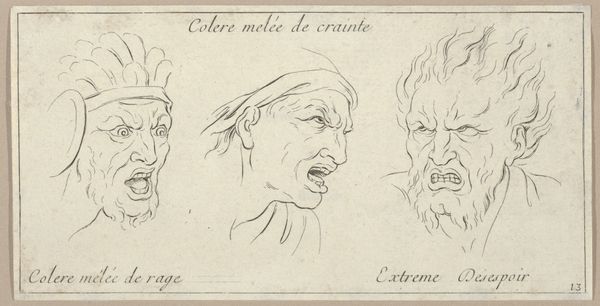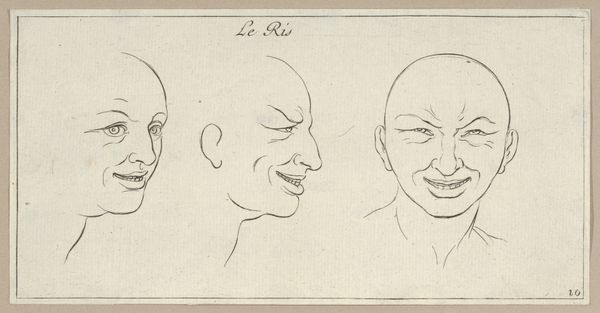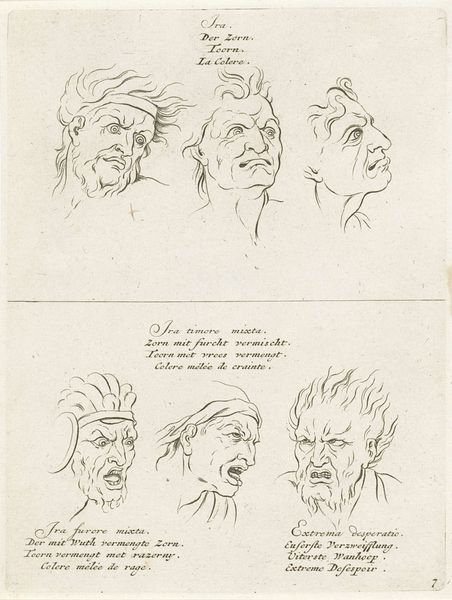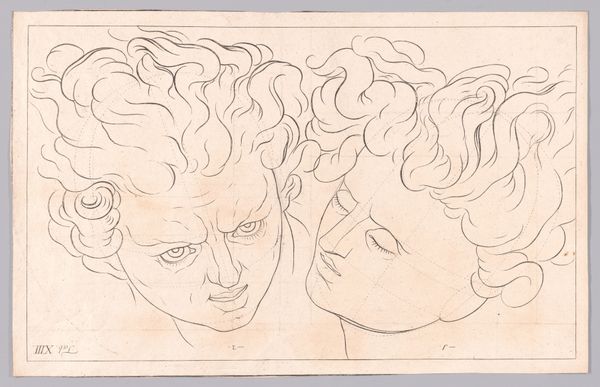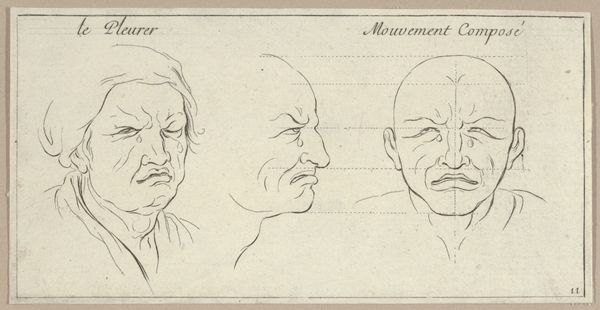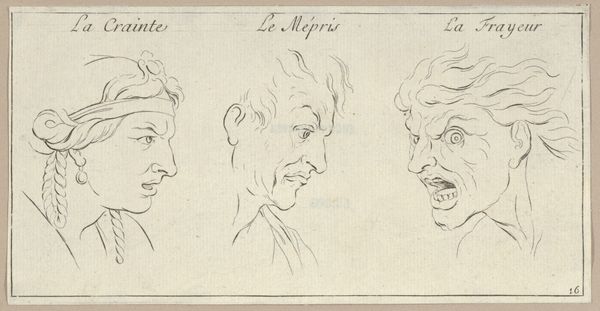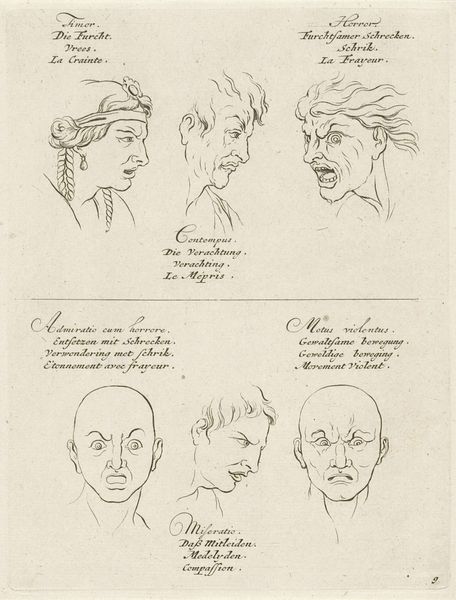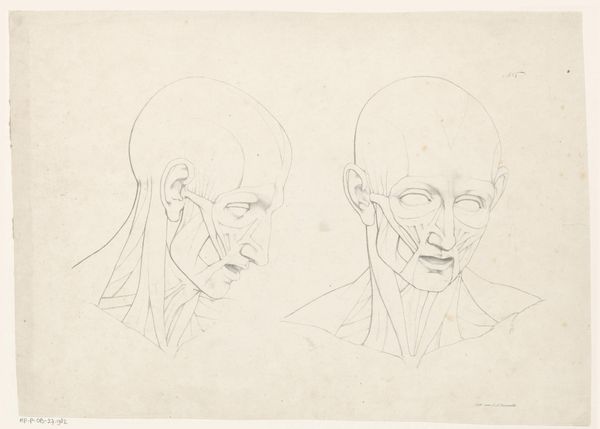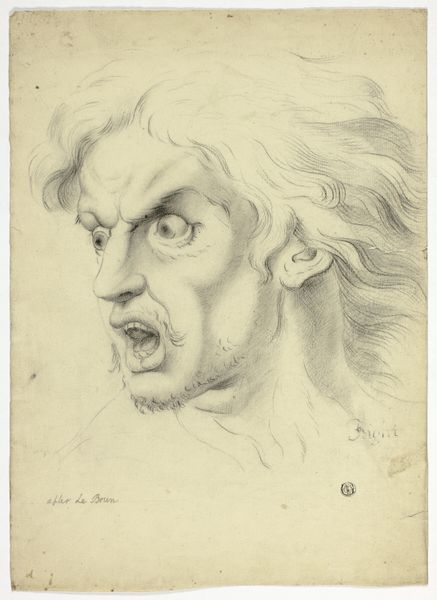
Le Colère (from Caractères des passions, gravés sur les desseins de l'illustre Monsieur le Brun) 1695 - 1720
0:00
0:00
drawing, print, engraving
#
portrait
#
drawing
#
baroque
# print
#
academic-art
#
engraving
Dimensions: Sheet: 2 15/16 × 5 13/16 in. (7.5 × 14.8 cm)
Copyright: Public Domain
Editor: This engraving from Sèbastien Le Clerc, made sometime between 1695 and 1720, is titled *La Colère*, or *Anger*. It's striking how these three heads all portray this singular emotion. What jumps out at you when you look at it? Curator: What strikes me is how this work exists at the intersection of art and science. Le Clerc, by engraving Le Brun’s designs, participates in a longer history of visualizing and codifying emotions that directly served scientific and political discourses. Where do we see anger displayed outside the artistic or medical treatise? Editor: Well, in politics of course! Demonstrations, protests… I see that echoed here, particularly in the almost theatrical expressions. It seems like these faces might be stand-ins, meant to represent types. Curator: Exactly. Think about the period: absolutist rule consolidating power, requiring performance. What happens if the "wrong" emotions are on display? Academic art was a tool in maintaining social order, setting standards for expressing correct emotion. So, how do we view that through a contemporary lens, when anger might be a radical, even necessary response? Editor: So you're saying what was once about enforcing control could be seen, from another perspective, as cataloging ways to express dissent? Is that pushing it too far? Curator: Not at all! These images become charged. Looking at their grimaces now, don’t they also recall images of marginalized people whose anger, historically suppressed, is now finding expression and demanding social change? Editor: Wow, I didn’t consider that this nearly three-hundred-year-old print could be so relevant. It’s much more complex than just angry faces. Curator: Precisely. The encoding and decoding of emotions remains an intensely political act. It's an invitation to ask who is allowed to express what, and when.
Comments
No comments
Be the first to comment and join the conversation on the ultimate creative platform.
